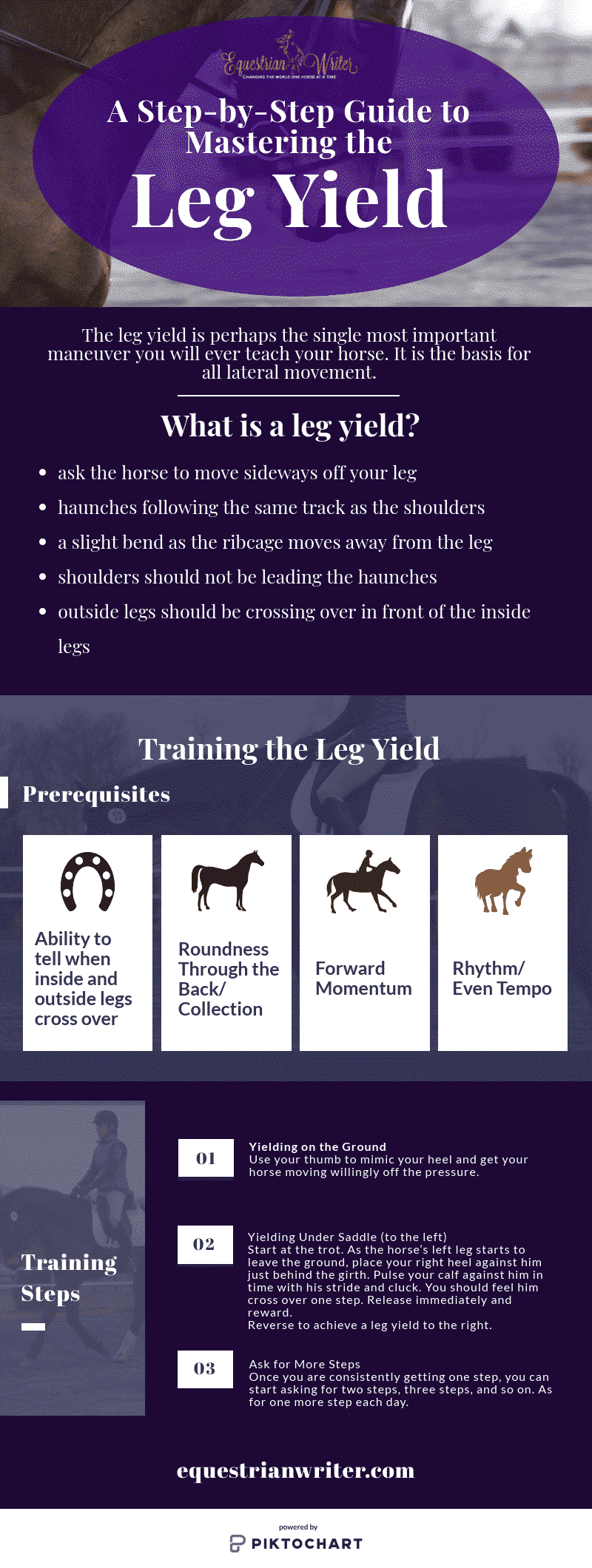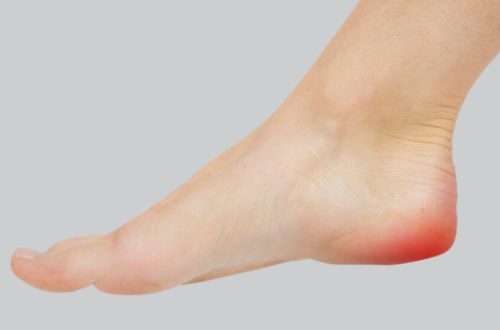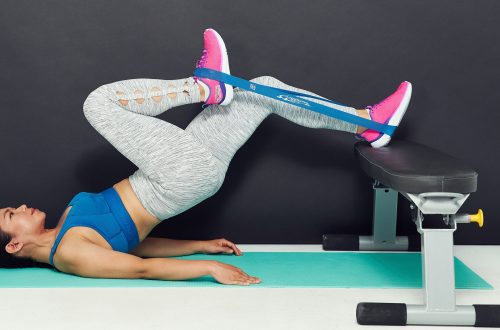
Leg yield is the basis of lateral movement
Leg yield is the basis of lateral movement
Leg yielding is one of the first, fundamental exercises in horse and rider development. This is the first two-track exercise that teaches the rider how to use his legs in such a way that the horse responds to them as a well-used control. This is a basic lateral movement that should be performed by the horse in a relaxed, free and unconstrained manner. Done correctly, it can positively influence the longitudinal and lateral flexibility of the horse.
The rider can ask the horse to make a concession, once he has shown him his confidence, he will begin to move forward willingly from the influence of the leg, remaining calm and balanced.
Leg yielding requires the horse to move forward and sideways in response to the rider’s aids, the horse’s hind foot stepping into the trail of the front foot. The exercise is usually done at the walk, although more experienced riders can also do it at a working trot.
So, as we said above, leg yielding is double track riding. The spine of the horse must remain straight from the tail to the poll! A slight flexion at the neck and a slight flexion may be present, but the horse must not flex at the body. The inner legs evenly and clearly move forward and to the side, crossing with the outer ones. The fold side is considered to be the inside side, even if it does not face the center of the arena. The shankel that moves the horse to the side is considered inside.
It is easier for a beginner rider to start leg yielding on the arena wall. The horse’s head is directed to the wall. The rider does not need to use many reins. On the contrary, you should focus more on your body and legs, on sending a message to the side.
Later it will be possible to try leg yielding on the wall by turning the horse with its head to the center of the arena.
When you are leg-yielding on the long side of the arena, the angle between the horse’s body and the wall should not exceed 30-40 degrees. If it increases, then the horse begins to simply move to the side (and not forward-to-side), loses the rhythm. Such a performance of the exercise can adversely affect the health of the legs.
Yielding to the leg improves the horse’s conduction, affects its immediate and correct reaction to the side-shifting effect of the leg. This exercise teaches the rider to coordinate his body, correctly applying messages, to monitor his movements depending on the situation, to feel the horse.
The rider must properly use the leg, balancing between the work of the inner leg shifting to the side and the outer leg moving forward.
We must not forget about competent work with hands. Yielding is performed from the leg and body, and not as a result of pulling the horse’s head. Hands only give a decision and ensure the correct position of the neck of the animal.
Impact of weight and leg work when making concessions.
When performing the exercise, the horse yields to leg and pelvic pressure, which must be present on the same side. The rider sits more heavily in the saddle, transferring his weight on the inside.
Inner leg is at the girth, pushing the horse. It only has an effect on the horse when his inside hind leg is lifted off the ground to initiate a forward-to-side step.
External leg is located behind the girth, preventing the horse’s hindquarters from tilting. He is also responsible for moving forward.
The inner leg shifts, the outer leg controls.
Outside rein controls the position of the front of the horse, does not allow it to fall out with its shoulder. It supports the action of the inner leg.
At the end of the exercise, the horse is leveled, moved to the wall and sent straight.
The leg yield can be performed in various variations.. Here are some of them:
1. Yielding diagonally.
2. Concession on the circle.
3. Concession from the quarter line.
4. Semi-diagonal.
5. Yielding from the center line.
6. Concession from the quarter line.
Yielding from the quarter line climbing the arena wall can sometimes be difficult for a horse and/or rider in the early stages of training. In this case, you can simplify the exercise: make a concession from a distance of 2-3 meters from the wall.
Diagonal concession.
To test and improve the horse’s response to pushing forward and sideways and controlling the outside rein, the rider can yield diagonally. It will need to be completed five meters before the corner of the arena. The horse will need to level out, pass a short wall and make a concession along the other diagonal. The exercise can be performed at walk and working trot. The front of the horse should be slightly ahead of the rear.
Concession in a circle.
This exercise is best performed by moving to the left in a 20-meter circle. The highest point on the letter X.
To mark the trajectory, go to the circle from the wall of the arena. After going around the circle a couple of times, approaching the starting point on the arena wall, try to complete a couple of leg yield steps. Later you will be able to divide the circle into two equal parts. On one half of it, ride, bending the horse in the side, and on the second half, perform a concession to the leg.
It is impossible not to pay attention to the most common mistakes when doing a leg yield:
1. The horse falls out with the outside shoulder.
2. Rider shift weight to the outside.
3. Too much neck bend, too much inside rein.
4. The angle between the horse’s body and the wall is greater than 45 degrees.
5. The horse is incorrectly bent at the occiput.
Before moving on to more complex lateral movements, rider and horse must perform leg yielding evenly, relaxedly and correctly in both directions. After, based on this exercise, you can begin to work on the Shoulder inward.
Improper leg yielding will have a big impact on your subsequent workouts, so when you start working on it, do not neglect the presence and support of a trainer.
Uwe Spenlen; translation by Valeria Smirnova (source)
 Very good 29 March 2017 city
Very good 29 March 2017 cityThank you for the article! It can be clarified: “The side of flexion is considered internal, even if it faces towards the center of the arena” – The side facing the center of the arena is considered internal, is it a translation error or do you mean something else? Answer
 Maria 29 March 2017 city
Maria 29 March 2017 cityThank you, now we will correct it for “not” in the center. Errors sometimes come out 🙁 Reply





